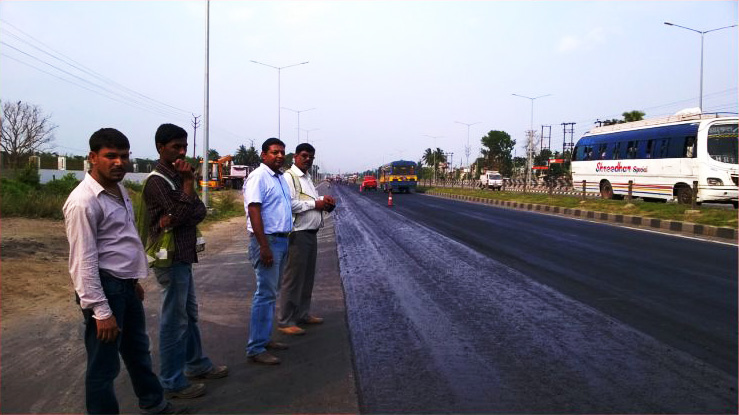- +91 98302 20701 / +91 9830040702
- headoffice@jalnidhi.com
- Request A Quote
History of Micro surfacing Emulsion : Micro surfacing was processed in Germany in the early 1970. After a continuous research over the time resulting in as modern micro surfacing, this was introduced first in United Stated in 1980. Now it is only recognized most cost effective treatment in the surface rutting problems.
What is Micro Surfacing : Micro Surfacing is a protective seal coat which extends the life of pavement. It is a thin, tough layer of Asphalt Emulsion blended with finely crust stone, latex based polymer and chemical additives. This is a effective method to renew the road surface, which seal minimal cracks and other rutting treatment.

The typical composition of micro surfacing mix consist of following ingredients:



| Requirements | Specifications | Test Method | |
|---|---|---|---|
| Residue on 600µm ISSieve (Percent by mass), maximum | 0.05 | IS:8887 | |
| Viscosity by Saybolt Furol Viscometer at 25°C, second | 20 – 100 | IS:8887 | |
| Coagulation of emulsion at low temperature | Nil | IS:8887 | |
| Stability after 24 h (168h), %, maximum | 2 (4) | IS:8887 | |
| Particle charge, +ve/-ve | +ve | IS:8887 | |
| Test on Residue | |||
| a) | Residue by evaporation, % minimum | 60 | IS:8887 |
| b) | Penetration at 25 °C / 100g / 5s | 40 – 100 | IS:1203 |
| c) | Ductility at 27 °C, cm, minimum | 50 | IS:1208 |
| d) | Softening Point °C, minimum | 57 | IS:1205 |
| e) | Elastic Recovery, *% minimum | 50 | IS:15462 |
| f) | Solubility in Trichloroethylene, % minimum | 97 | IS:1216 |
We welcome collaborations with businesses, fostering long-term, mutually beneficial partnerships built on trust and reliability.
Join our dynamic team to gain in-depth knowledge, enhance your skills, and grow through hands-on training and experience.